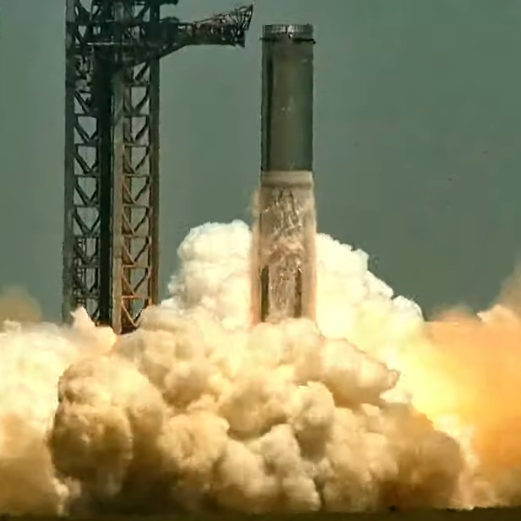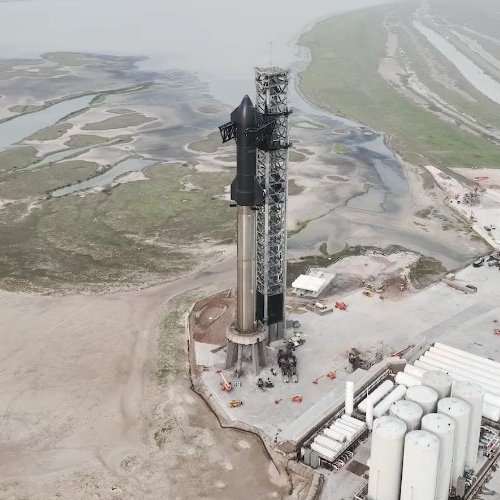More than a year after the New Shepard accident, the FAA finally closes its investigation
It appears that Elon Musk and SpaceX is not the only space company being stymied by the new heavy-handed regulation coming from the federal bureaucracy since Joe Biden took power. In a statement issued yesterday, the FAA announced that is had finally closed its own investigation into the New Shepard accident that occurred on September 12, 2022, more than a year after it occurred. More significantly, the FAA also said that despite completing its investigation, it is still denying Blue Origin a launch license to resume suborbital flights.
The FAA required Blue Origin implement 21 corrective actions to prevent mishap reoccurrence, including redesign of engine and nozzle components to improve structural performance during operation as well as organizational changes. … The closure of the mishap investigation does not signal an immediate resumption of New Shepard launches. Blue Origin must implement all corrective actions that impact public safety and receive a license modification from the FAA that addresses all safety and other applicable regulatory requirements prior to the next New Shepard launch.
It once again must be stated that there is no one at the FAA truly qualified to make such recommendations. These are paper-pushers, even if they have some engineering background. The FAA must rely on Blue Origin’s own engineers to determine these issues, as well figure out what must be done to fix them.
While Blue Origin’s own corporate culture — terribly slow at accomplishing anything — is certainly at major factor in these delays, it appears the FAA has not been helping. Blue Origin had announced the completion of its own investigation in March, six months ago, with the same conclusions as the FAA investigation completed now. Why did it take the FAA six more months to close its own investigation?
Moreover, the FAA’s statement makes it clear that Blue Origin has not yet satisfied the government’s demands, even though the investigation is closed. For Blue Origin to have still not implemented the corrections is to be expected, considering its slow methods of operation, but this statement — similar to the statement issued in connection with closing its investigation of the SpaceX’s Superheavy/Starship test flight — suggests a new and unprecedented policy at the FAA, treating all space-related incidents as if the rockets and spacecraft are no different than airplanes. First it will take its time issuing its own investigation, then it will take its time approving the corrections any company implements, just to make sure all the “i”s are dotted and the “t”‘s are crossed.
It is also possible that the FAA has been ordered to implement this new heavy-handed policy by higher ups in the White House on all companies, in order to hide the political motivations that have been targeting SpaceX and Elon Musk.
Regardless, this new strict regulation likely means we should expect a serious slowdown in the rebirth of commercial space. The renaissance of achievement by private enterprise in the past decade in space could be ending.
It appears that Elon Musk and SpaceX is not the only space company being stymied by the new heavy-handed regulation coming from the federal bureaucracy since Joe Biden took power. In a statement issued yesterday, the FAA announced that is had finally closed its own investigation into the New Shepard accident that occurred on September 12, 2022, more than a year after it occurred. More significantly, the FAA also said that despite completing its investigation, it is still denying Blue Origin a launch license to resume suborbital flights.
The FAA required Blue Origin implement 21 corrective actions to prevent mishap reoccurrence, including redesign of engine and nozzle components to improve structural performance during operation as well as organizational changes. … The closure of the mishap investigation does not signal an immediate resumption of New Shepard launches. Blue Origin must implement all corrective actions that impact public safety and receive a license modification from the FAA that addresses all safety and other applicable regulatory requirements prior to the next New Shepard launch.
It once again must be stated that there is no one at the FAA truly qualified to make such recommendations. These are paper-pushers, even if they have some engineering background. The FAA must rely on Blue Origin’s own engineers to determine these issues, as well figure out what must be done to fix them.
While Blue Origin’s own corporate culture — terribly slow at accomplishing anything — is certainly at major factor in these delays, it appears the FAA has not been helping. Blue Origin had announced the completion of its own investigation in March, six months ago, with the same conclusions as the FAA investigation completed now. Why did it take the FAA six more months to close its own investigation?
Moreover, the FAA’s statement makes it clear that Blue Origin has not yet satisfied the government’s demands, even though the investigation is closed. For Blue Origin to have still not implemented the corrections is to be expected, considering its slow methods of operation, but this statement — similar to the statement issued in connection with closing its investigation of the SpaceX’s Superheavy/Starship test flight — suggests a new and unprecedented policy at the FAA, treating all space-related incidents as if the rockets and spacecraft are no different than airplanes. First it will take its time issuing its own investigation, then it will take its time approving the corrections any company implements, just to make sure all the “i”s are dotted and the “t”‘s are crossed.
It is also possible that the FAA has been ordered to implement this new heavy-handed policy by higher ups in the White House on all companies, in order to hide the political motivations that have been targeting SpaceX and Elon Musk.
Regardless, this new strict regulation likely means we should expect a serious slowdown in the rebirth of commercial space. The renaissance of achievement by private enterprise in the past decade in space could be ending.







